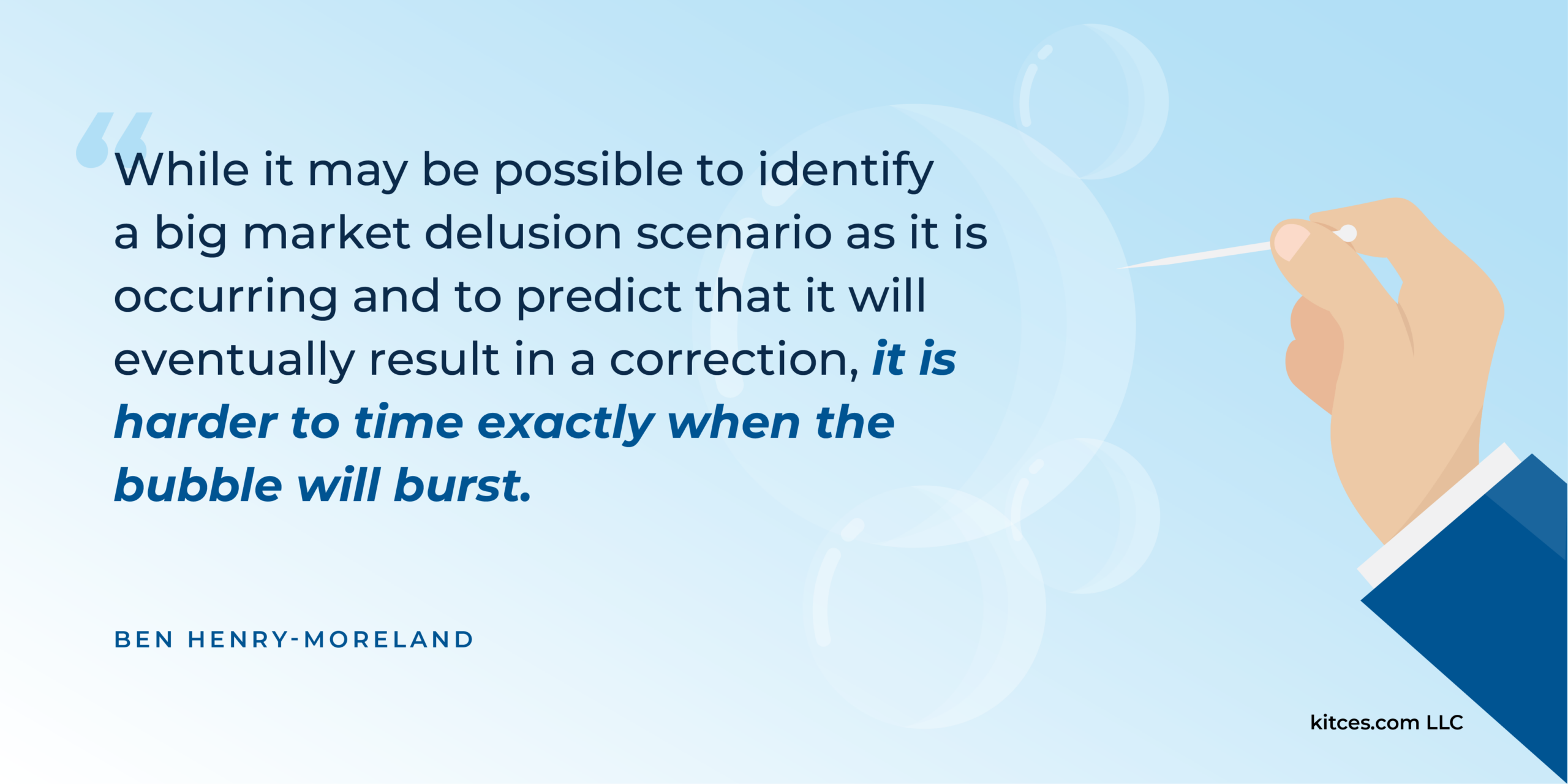A key value proposition for financial advisors is helping clients avoid common behavioral biases that can lead to suboptimal investment decisions. Even people who are normally rational decision-makers can be prone to fear, greed, and overconfidence, and the persistence of market bubbles where investors chase whatever company or sector is all the rage at the time (and often get stuck with losses when the bubble pops) shows that herd mentality in investing is as prevalent as ever. Which often leads to advisors counseling their clients to stay diversified and stick with a disciplined investment strategy to optimize their risk and return over the long term.
But even today, despite the evidence we have about our tendencies to make irrational choices, people still often fall prey to herd mentality in their investment decisions, as demonstrated by modern-day bubbles around meme stocks and cryptocurrencies. Even professional investors such as venture capitalists aren’t immune either, with the rise and fall of companies like WeWork and Theranos showing that sophisticated investors can be enticed to abandon a disciplined approach by a sales pitch that’s too good to be true. In fact, as more and more technology proliferates, with much of it promising to have a worldwide and life-changing impact, the temptation to chase the next big thing may grow even stronger.
However, it isn’t just individual companies or speculative assets like Bitcoin that can be prone to bubbles. When a new technology or product is introduced that has the potential to reach a huge new market, investors tend to bet on many (or even all) of the companies that provide the technology as if they will each become the dominant player in that market. And because every company can’t possibly become a winner (since they’re competing with each other, and one company’s success will necessarily come at the other’s expense), this tends to result in the entire industry becoming overvalued. Investors’ enthusiasm tends to feed on itself, resulting in increasingly unrealistic valuations, until suddenly reality comes into focus, and prices drop for all countries in the industry – often wiping out some companies and creating severe losses even in the ones that do survive.
There tend to be 4 main signs of this type of “Big Market Delusion”, which have been present in market bubbles ranging from the 1990s dot-com boom to the 2000s digital advertising market to the 2010s cannabis industry. First, there is a story of a vast potential market for a new technology or product; second, investors and entrepreneurs tend to ignore the possibility that competition will squeeze profits for existing companies and reduce expectations for future revenues; third, companies focus overwhelmingly on growth in users or revenue as the primary metric rather than profitability; and finally, the valuations for these companies grow with no connection to their underlying fundamentals. And though it may not be possible to time exactly when a big market bubble will burst, these signs make it highly likely that a correction will happen eventually.
The key point is that when an investor bets on a new technology or industry becoming huge based on the size of its potential market, even ‘diversifying’ by investing in multiple companies within that industry won’t necessarily protect them from losses, because when the entire industry becomes overvalued, the resulting correction is likely to affect everyone. The simple way to avoid getting caught up in big market delusions is by remaining broadly diversified across markets – and for advisors, the lessons learned from previous examples of big market delusions can help guide clients on avoiding the next one!


